Climate Change - Worrying about US!
![]()
Recently, we watched Earth: The Power of the Planet, a documentary series from BBC and National Geographic Channel. Dr. Ian Stewart took us on an amazing journey to many remote and exotic locations where he demonstrated the forces that have created the conditions for life as we know it to thrive. In the final segment, Rare Earth, he demonstrated how unusual and perhaps unique are the specific combination of conditions for life. He concludes:
"Our planet is really tough. In the long run, Earth can cope with anything we can throw at it. It's only a question of time - the Earth will be just fine. Humans operate on a different time scale. We've evolved to live in the conditions on Earth now, so by changing these conditions, we could be creating conditions that threaten civilization. Planet Earth doesn't need saving. It's not the planet we should be worrying about - it's US!"
Just take a moment to consider his statement, "Planet Earth doesn't need saving!"
Does this mean we are "off the hook"? Well, only if we are not concerned about the future of the Human race!
Human caused global climate change is one of the primary impacts to be addressed. As humans have pumped green house gases (GHGs) into the atmosphere, a range of effects have been detected now and are projected to accelerate in the future, including rising sea levels and more frequent and higher storm surges and tides.
While we have been traveling around the Netherlands, we have encountered several projects that provide firm evidence that the Dutch are, indeed, concerned about their future..
Nieuwe Boulevard Scheveningen
The first of these projects addresses a fact of geography. As everyone knows, much of the Netherlands lies below sea level. Dunes and dykes along with other water works along the coastline have ensured that the Netherlands remained safe and dry. But climate change with the possibility of sea level rise and greater storm surges means that there are places along the coast that may become vulnerable.
One of these places is Scheveningen, the fishing village turned seaside resort, near Den Haag. In order to protect the surrounding countryside from flooding, the existing dunes are being raised and reinforced and the beach is being widened. The newly raised dune will be two kilometers long and 12 meters above Normal Amsterdam Water Level and will lie underneath a newly added boulevard, the Nieuwe Boulevard Scheveningen! The municipality of Den Haag is combining this major Climate Change adaptation project with a makeover of the resort.
On our walk along the beach, we visited the construction site to learn more about this project. An Information Center offered videos with realistic animation of the construction and visualizations of the Nieuwe Boulevard Scheveningen, while nearby observation towers offered views of the actual construction. The project has been separated into four sections and each section will be constructed over the course of a year.
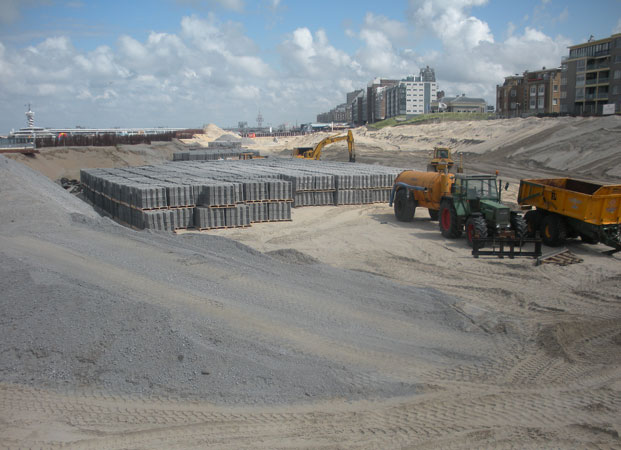
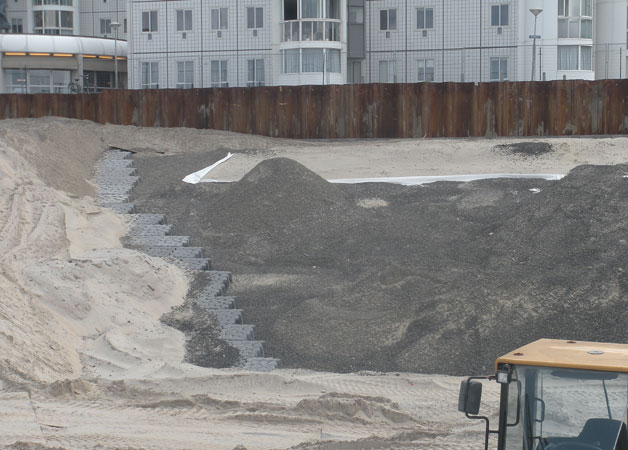
The whole project will be completed by May, 2013. While the work is ongoing, the beach will still be accessible for those wonderful long walks and bike rides and the beach pavilions will continue to serve food and drink, offering great views of the mighty waves without fear!
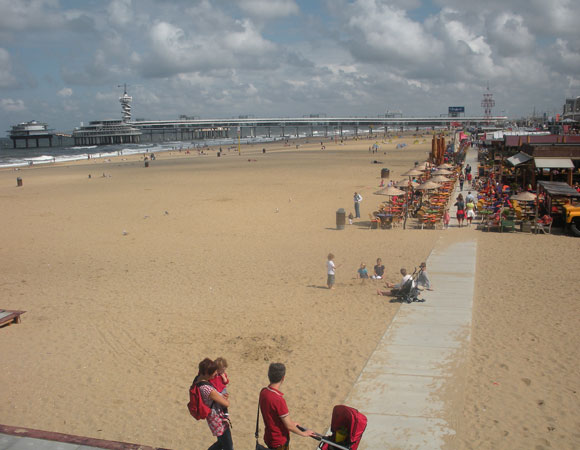
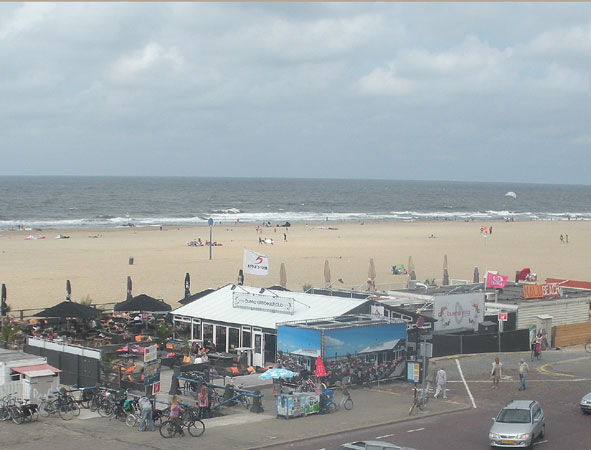
When we return in 2013, we'll see the undulating course of the boulevard, merging naturally into the surroundings. The stepped levels will offer distinct spaces for walkers, bicycles and cars, while taking in the dramatic sea views. The boulevard will be more connected with the adjacent village and harbor as the regeneration continues inland. Over time, new construction and regeneration in the adjacent village and harbor will provide living and working spaces, enhanced and expanded tourist facilities, and faster mobility to connect Den Haag and Scheveningen more closely, contributing to the vision of the Global City by the Sea. Pictures of their plans are below.
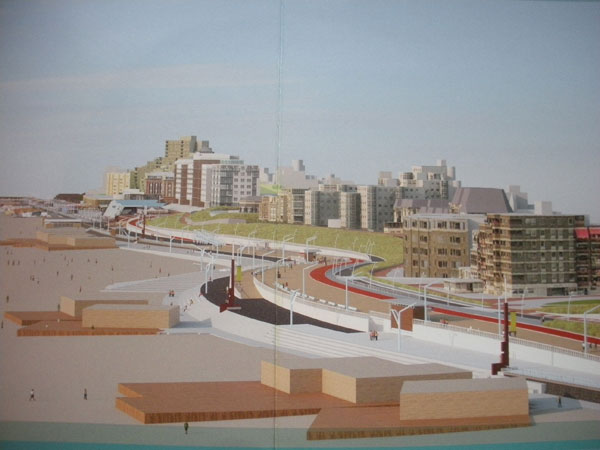
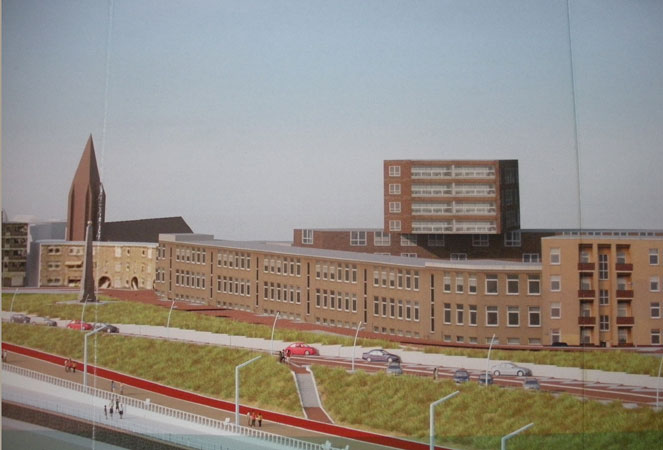
The fascinating story of this project is that Climate Change adaptation and Economic Development combine in a perfect synergy, creating green jobs now as well as expanded economic vitality for the whole area into the far future. The investment in adaptation will multiply many times as the concurrent economic development proceeds. This is truly leveraging of a whole new variety.
Duinsdorp
Continuing south, just beyond the Scheveningen haven (harbor), the village of Duinsdorp sits protected from the waves by the great coastal dunes. Built as a planned new district of Den Haag back in 1915 to 1930, the neat rows of connected houses were home to fishermen and their families. Over the years, changing labor demand shifted the population away from fishing and aging caused some homes to need renewal. So, in 2004, Vestia, a major housing developer, in partnership with the Gemeente Den Haag, began reconstruction of 789 of the town's 3,000 homes with energy efficient construction. These homes, all row houses, have the latest energy conserving elements and very special heating systems. The energy source is sea water!
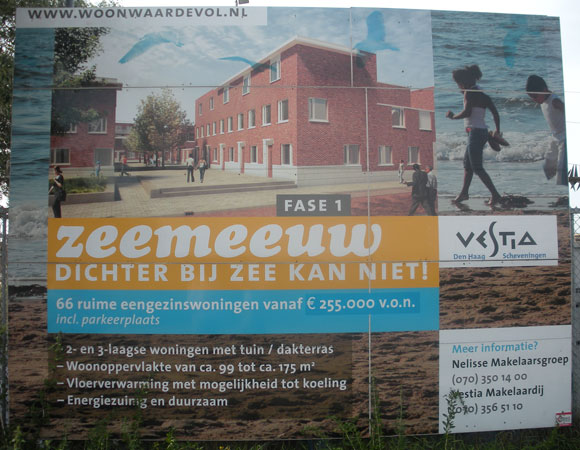
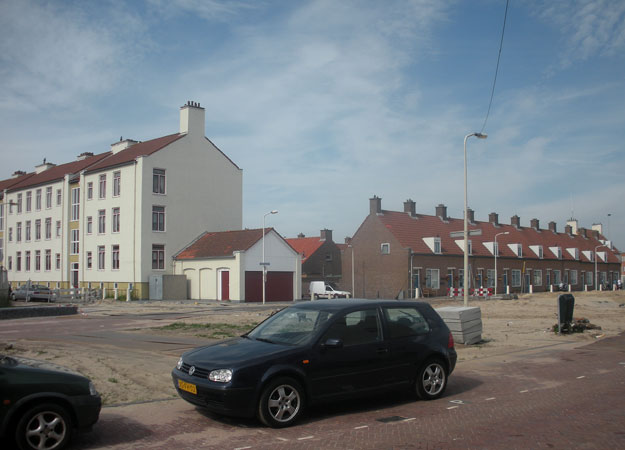
The sea water heating plant processes the sea water, either via a heat exchanger or heat pump, to extract the heat. According to Deerns Engineering Consultants, in the winter, when sea temperatures fall, a central heat pump provides a highly efficient means to raise the water temperature to the right level. The central heat plant is connected to the houses via a grid that delivers warmed water to each home. Each of the homes is also equipped with its own heat pump. The overall efficiency of the heat generation process with this system is more than 50% better than with conventional high-efficiency boilers, and that in turn results in a 50% reduction in CO2 emissions while the cost to the residents is no higher.
The water plant is part of the city's plan to use more sustainable energy and is one of the steps being taken towards making the area 'climate neutral' in order to reduce energy usage. This is the first time that this energy from sea water technology has been used in an actual housing development. The willingness of the project partners and the residents to just take the leap and do it demonstrates the sort of spirit that is needed if we are to save the human race!
Kijkduin
Its a lovely hike from Duindorp south along the coast, through the high dunes. The trail follows a valley between two dune ridges covered with the rich vegetation typical of this coastal ecosystem. Every 500 meters or so, a path leads through the dunes to the sea to enable access to bathing beaches for the hardy north Europeans, and nicely protected pavilions for the wimps, like us, to sit and sip a beer while watching the surf and bathers.
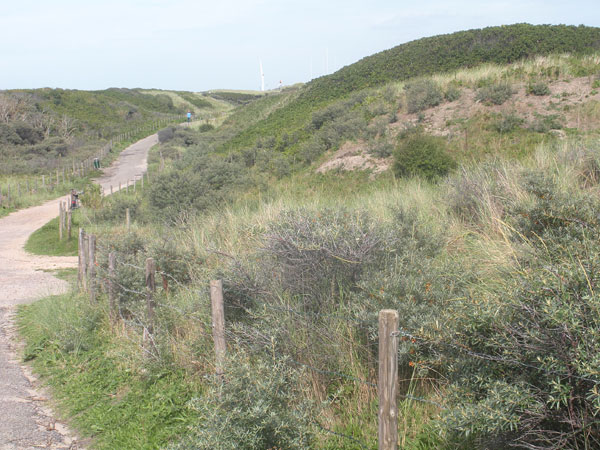
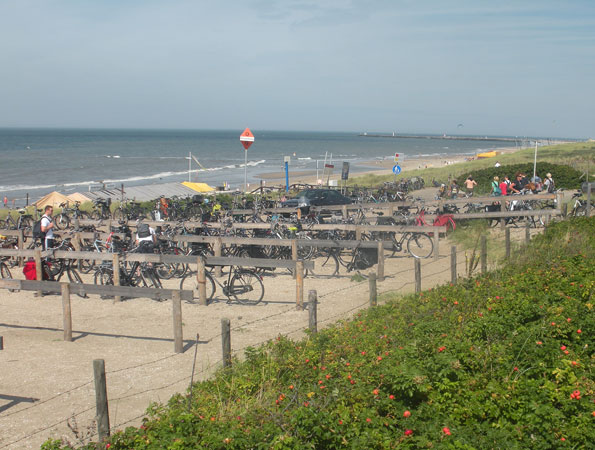
In about two kilometers, the trail ended at Kijkduin, another sea side village. Here, we discovered another adaptation project. This involved raising the level of the dunes by pumping sand. The resulting higher, broader dunes were replanted with sea grass to stabilize the sand and before long, this renewed dune system will increase the storm protection afforded the lands beyond. This more modest project is just what the Dutch have been doing for centuries!
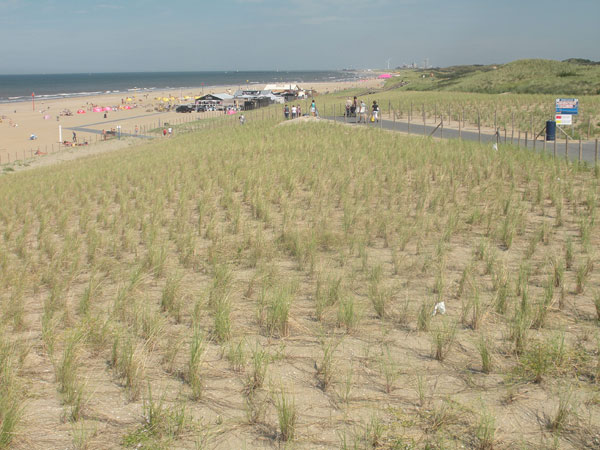
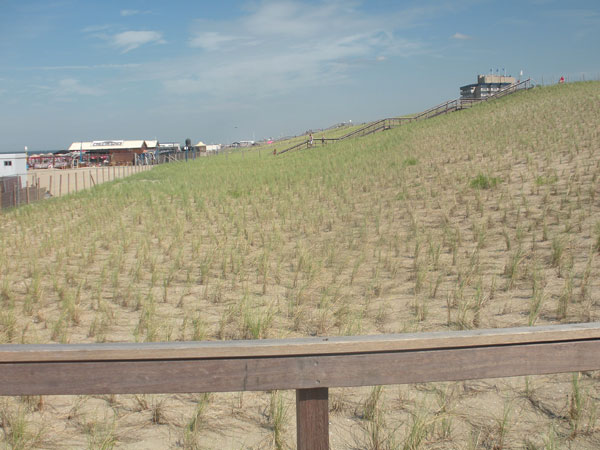
Maeslantkering (Surge Barrier)
A big concern, not only to the Netherlands but also to much of northern Europe is the protection of the Port of Rotterdam. This port is by far the largest in the European Union and among the largest in the world. In 2008, over 420 million metric tons of goods moved through the Port of Rotterdam! Over 10.7 million containers were loaded and unloaded. With billions of Euros invested in the infrastructure of the port; the refineries, the ship building, and the transhipment barge, truck and rail facilities; it is essential to ensure that the storm surges often associated with great storms on the North Sea cannot cause significant damage or lengthly disruptions.
The Rotterdam region is a watery one, sitting at the delta of the Maas river, a major branch of the Rhine, as it reaches the North Sea. The region is barely above sea level so a major storm surge means trouble! To prevent this trouble, the Dutch Ministry of Waterways and Public Works organized an engineering competition to solicit designs for the construction of a reliable yet relatively economical storm surge barrier in the Nieuwe Waterweg, the main route to the port of Rotterdam. Construction of the selected design began in 1991 and the result, six years later, was the Maeslantkering.
To visit this amazing engineering feat, we traveled to Hoek van Holland and walked along the Nieuwe Waterweg out to the site. An informatiecentrum provided details of the project, including a working model. Displays provided descriptions of the engineering, construction and operation (in Dutch), but the most intriguing part of our visit was the opportunity to view this immense surge barrier at close range (the swival base at top left, main support beams at top right and curved water barrier surfaces in bottom pictures)
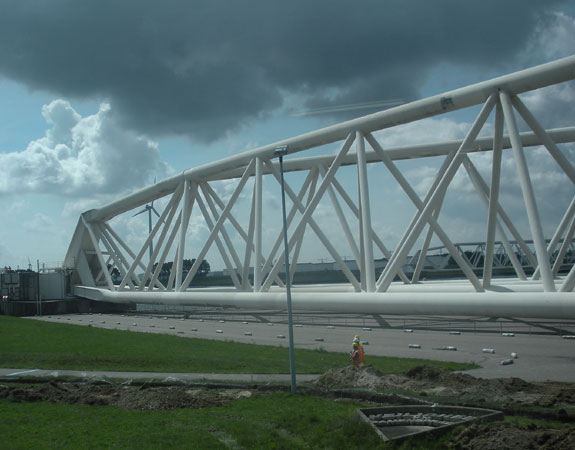
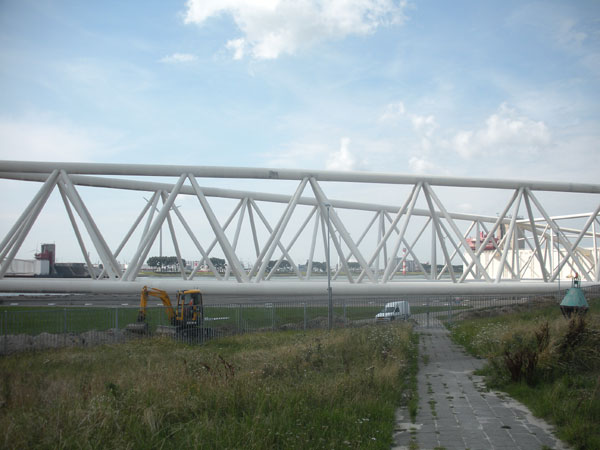
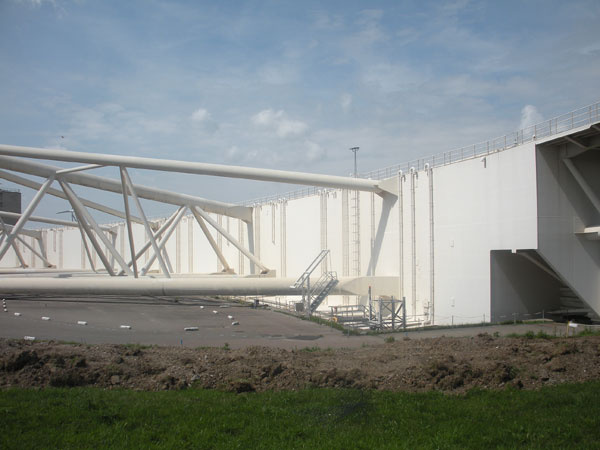
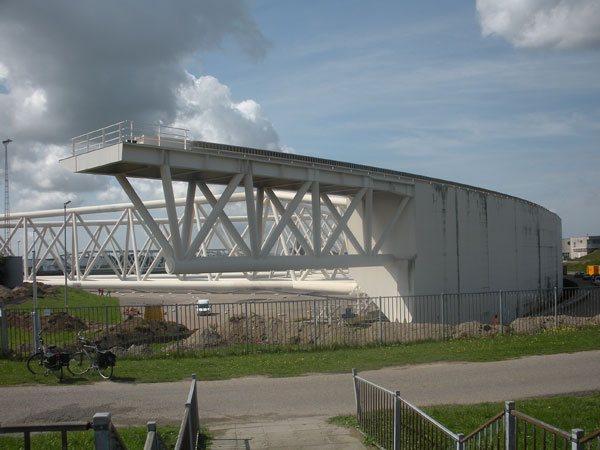
The barrier is essentially two huge curved gates, each 210 meters long and 22 meters high, that swing out into the waterway, to form a continuous wall across the channel. Once in place, they fill with water, and sink to the riverbed to create a nearly watertight seal. The barrier, when closed, protects the port, the city of Rotterdam, and the surrounding area from sudden flooding caused by storm surges. Pictures of the model showing the closing of the barrier are below.
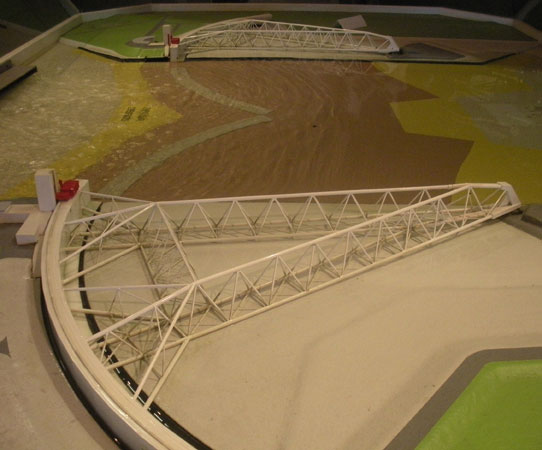
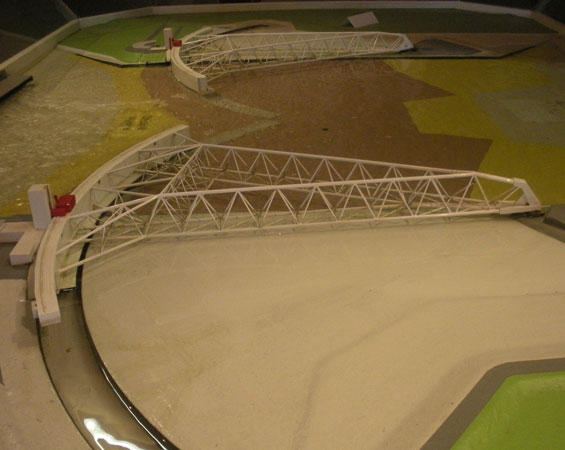

Of course, all movement of ships in and out of the port is suspended until the storm passes and the barrier is reopened. The closing occurs only when a surge of 3 meters above Normal Amsterdam Water Level is expected. The operation is completely computer controlled. The barrier is closed for testing once a year, usually in September or October, just before the beginning of the storm season in November.
The Maeslantkering was the final element of the Delta Works, the system of dams and surge barriers that protect the Netherlands from the sea.
Clearly the Dutch would prefer that world wide actions would be taken to curb continuing GHG emissions as they, like all of the members of the European Union, are taking steps to do so. At the same time, they refuse to leave the safety and stability of their country to others. They are making sure they will be dry no matter what all the rest of us decide to do.
Click here to return to our 'Summer 2010 - Turkey and More Time in Europe' page
![]()